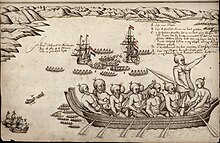
The history of Norfolk Island dates back to the fourteenth or fifteenth century when it was settled by Polynesian seafarers.
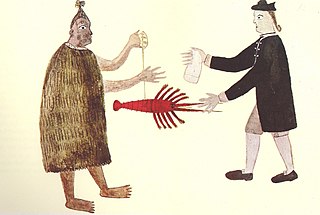
This is a timeline of the history of New Zealand that includes only events deemed to be of principal importance – for less important events click the year heading or refer to List of years in New Zealand.

Tamatea / Dusky Sound is a fiord on the southwest corner of New Zealand, in Fiordland National Park.

Jean-François Marie de Surville was a merchant captain with the French East India Company. He commanded a voyage of exploration to the Pacific in 1769–70.
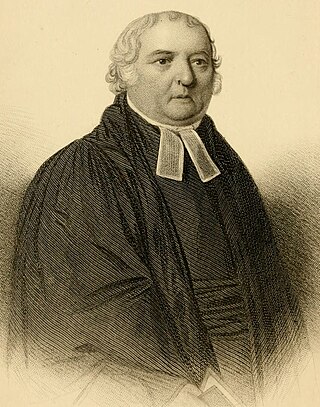
Samuel Marsden was an English-born priest of the Church of England in Australia and a prominent member of the Church Missionary Society. He played a leading role in bringing Christianity to New Zealand. Marsden was a prominent figure in early New South Wales and Australian history, partly through his ecclesiastical offices as the colony's senior Church of England cleric and as a pioneer of the Australian wool industry, but also for his employment of convicts for farming and his actions as a magistrate at Parramatta, both of which attracted contemporary criticism.
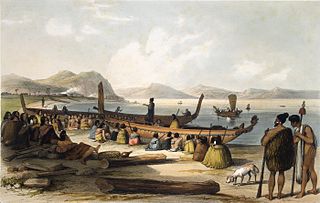
Waka are Māori watercraft, usually canoes ranging in size from small, unornamented canoes used for fishing and river travel to large, decorated war canoes up to 40 metres (130 ft) long.

The first voyage of James Cook was a combined Royal Navy and Royal Society expedition to the south Pacific Ocean aboard HMS Endeavour, from 1768 to 1771. It was the first of three Pacific voyages of which James Cook was the commander. The aims of this first expedition were to observe the 1769 transit of Venus across the Sun, and to seek evidence of the postulated Terra Australis Incognita or "undiscovered southern land".
There is a drastic decline in the number of ships visiting New Zealand from the previous year. An economic depression starts in New South Wales as a result of the escalation of war in Europe and the consequent reduction in the number of convicts being transported. In March news of the Boyd massacre reaches Port Jackson and a punitive expedition is sent to New Zealand and bombards the village of the incorrectly blamed chief, Te Pahi. After this the few whaling ships that later head for New Zealand usually prefer to avoid landing, especially in the Bay of Islands.
Foveaux Strait is the centre of attention for sealing ships. Sealing gangs are dropped along the coast from southern Fiordland to Otago Harbour and on Stewart Island / Rakiura. The Bay of Islands is sometimes on the journey to or from Port Jackson. The Chatham Islands are also visited. A few whalers also operate around New Zealand; some also collect timber from Bay of Islands.
As sealing at Bass Strait and the Antipodes Islands declines, Foveaux Strait becomes the focus for sealers from the middle of the year. The Bounty and Auckland Islands are also visited. Whaling is carried out on the east coast of New Zealand with the Bay of Islands being the usual port of call for provisioning. As many as nine ships whaling together for months at a time can occur. The behaviour of the whalers at the Bay of Islands is again commented on unfavourably, this time by a former missionary on one of the whaling ships. There are also a number of vessels collecting sandalwood from Tonga or Fiji; the majority call at the Bay of Islands en route.
Sealing continues at Bass Strait and the Antipodes Islands. At the end of the year there is a new sealing rush to the Bounty and Auckland Islands. Few sealers, if any, are known to have visited the Foveaux Strait area at this time, although this may be due in part to the secrecy of the captains and owners in reporting where they operate and/or the existence of the Strait not yet being widely known. Whaling continues off the east coast of the North Island. Ships are now visiting the Bay of Islands on a reasonably regular basis. The first reports about the poor behaviour of ships crews are sent to the Church Missionary Society in London.
Sealing continues at Bass Strait but declines at Dusky Sound which is still used for provisioning. There is a new rush to the Antipodes Islands. The existence of Foveaux Strait is not reported in Port Jackson until early the following year so sealers are still travelling via the south of Stewart Island / Rakiura which some also visit. At Stewart Island / Rakiura, and its smaller surrounding islands, the sealers often encounter Māori which they have not done at all at Dusky Sound. As many as 16 whalers are operating around the north of New Zealand, occasionally visiting the Bay of Islands and taking an increasing number of Māori on board as crew.
There is a lessening of the sealing rush at Bass Strait as the rookeries become thinner, and as a result sealers return to Dusky Sound and explore the surrounding coast. Little of the movements of these ships is actually recorded as a veil of secrecy still surrounds their activities while the various ships try to make the most of any discoveries before the competition arrives. They occasionally meet local Māori but little information regarding these encounters survives. There are again around half a dozen whalers off the north-east coast of New Zealand, a few of which call into the Bay of Islands. The first Māori to join a whaling ship, and possibly the first to leave New Zealand in 10 years, does so early in the year.
The ships visits to collect timber come to an end as the wood they have been taking, kahikatea and pōhutukawa, is found to be unsuitable for ship building. With the end of this industry the Firth of Thames area ceases to be the main point of contact for Pākehā and Māori. At the end of the year Governor King reports half a dozen whaling ships are operating off the north coast. The first recorded sealing ship visit to Dusky Sound in 4 years takes place as most sealers visit the recently discovered Bass Strait rookeries instead.
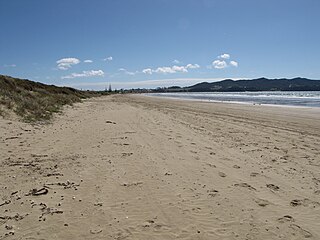
Whatuwhiwhi or Karikari is a settlement at the northern end of Tokerau Beach, on the Karikari Peninsula of Northland, New Zealand. To the south is Doubtless Bay.
Trial was a ship that first appears in Australian newspaper records in 1808 and that was seized by convicts and eventually wrecked on the Mid North Coast of New South Wales, Australia in 1816.
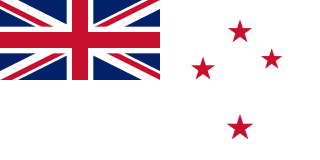
A range of naval vessels were used in New Zealand from its early settlement years to the formation of the New Zealand Naval Forces in 1913. In the mid-19th century, these vessels included frigates, sloops, schooners, and steam-driven paddlewheel boats. In 1846, five years after New Zealand was first proclaimed a colony, it bought its first gunboat. In the 1840s and 1850s, steam boats were used to survey the ports and the coastline. In the 1860s, New Zealand established the Waikato flotilla, its first de facto navy.
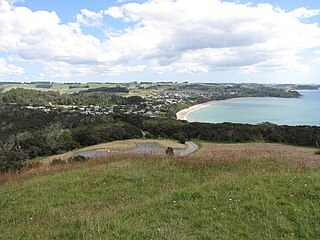
Doubtless Bay is a bay on the east coast of the Northland Region, north-east of Kaitaia, in New Zealand. It extends from Knuckle Point on Karikari Peninsula in the north to Berghan Point at Hihi in the south. There are rocky headlands, backed by many extensive beaches, such as Tokerau Beach, Taipa, Cable Bay, Coopers Beach, and Mangonui Harbour.

Te Pahi was a Māori tribal leader and traveller from New Zealand. He was from the Ngāpuhi iwi and lived in the Rangihoua Bay area of the Bay of Islands.
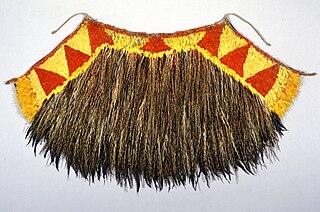
The Australian Museum's Cook Collection was acquired in 1894 when it was transferred from the Government of New South Wales. At that time it consisted of 115 artifacts collected on Captain James Cook's three voyages of discovery Throughout the Pacific Ocean, during the period 1768–1780, along with documents and memorabilia related to these voyages. Many of the ethnographic artifacts were collected at a time of first contact between Pacific Peoples and Europeans. In 1935 most of the documents and memorabilia were transferred to the Mitchell Library in the State Library of New South Wales. The provenance of the collection shows that the objects remained in the hands of Captain James Cook's widow, Elizabeth Cook and her descendants until 1886. In this year John Mackrell, the great nephew of Isaac Smith, Elizabeth Cook's cousin, organized the display of this collection at the request of the NSW Government at the Colonial and Indian Exhibition in London. In 1887 the London-based Agent-General for the New South Wales Government, Saul Samuel, bought John Mackrell's items and also acquired those items belonging to the other relatives Reverend Canon Frederick Bennett, Mrs Thomas Langton, H.M.C. Alexander and William Adams. The collection remained with the Colonial Secretary of NSW until 1894, when it was transferred to the Australian Museum.
